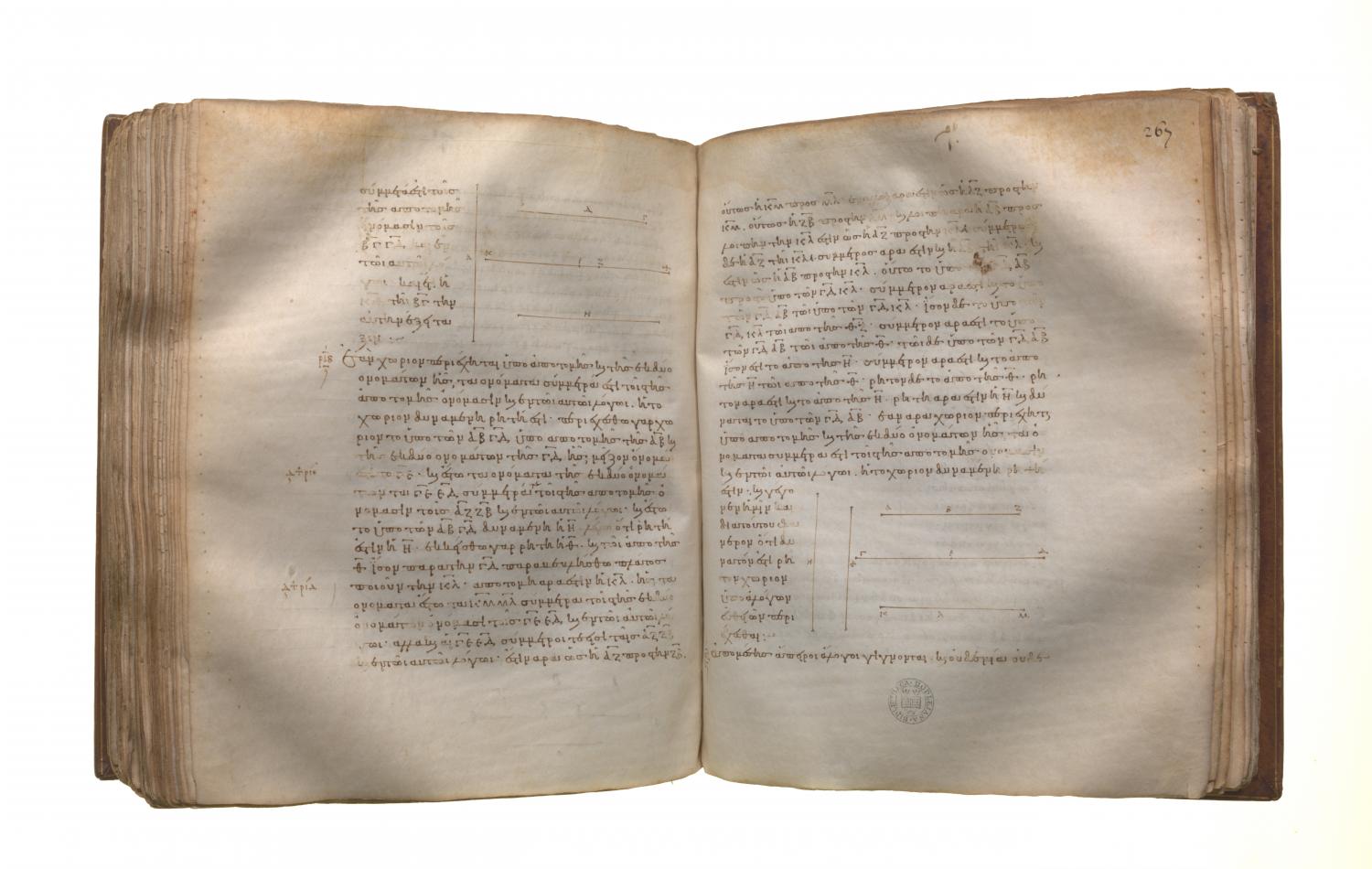Classification of incommensurables: Book 10 Proposition 113
Translations
The square on a rational straight line, if applied to an apotome, produces as, breadth the binomial straight line the terms of which are commensurable with the terms of the apotome and in the same ratio; and further the binomial so arising has the same order as the apotome. Let A be a rational straight line and BD an apotome, and let the rectangle BD, KH be equal to the square on A, so that the square on the rational straight line A when applied to the apotome BD produces KH as breadth; I say that KH is a binomial straight line the terms of which are commensurable with the terms of BD and in the same ratio; and further KH has the same order as BD. For let DC be the annex to BD; therefore BC, CD are rational straight lines commensurable in square only. [X. 73] Let the rectangle BC, G be also equal to the square on A. But the square on A is rational; therefore the rectangle BC, G is also rational. And it has been applied to the rational straight line BC; therefore G is rational and commensurable in length with BC. [X. 20] Since now the rectangle BC, G is equal to the rectangle BD, KH, therefore, proportionally, as CB is to BD, so is KH to G. [VI. 16] But BC is greater than BD; therefore KH is also greater than G. [V. 16, V. 14] Let KE be made equal to G; therefore KE is commensurable in length with BC. And since, as CB is to BD, so is HK to KE, therefore, convertendo, as BC is to CD, so is KH to HE. [V. 19, Por.] Let it be contrived that, as KH is to HE, so is HF to FE; therefore also the remainder KF is to FH as KH is to HE, that is, as BC is to CD. [V. 19] But BC, CD are commensurable in square only; therefore KF, FH are also commensurable in square only. [X. 11] And since, as KH is to HE, so is KF to FH, while, as KH is to HE, so is HF to FE, therefore also, as KF is to FH, so is HF to FE, [V. 11] so that also, as the first is to the third, so is the square on the first to the square on the second; [V. Def. 9] therefore also, as KF is to FE, so is the square on KF to the square on FH. But the square on KF is commensurable with the square on FH, for KF, FH are commensurable in square; therefore KF is also commensurable in length with FE, [X. 11] so that KF is also commensurable in length with KE. [X. 15] But KE is rational and commensurable in length with BC; therefore KF is also rational and commensurable in length with BC. [X. 12] And, since, as BC is to CD, so is KF to FH, alternately, as BC is to KF, so is DC to FH. [V. 16] But BC is commensurable with KF; therefore FH is also commensurable in length with CD. [X. 11] But BC, CD are rational straight lines commensurable in square only; therefore KF, FH are also rational straight lines [X. Def. 3] commensurable in square only; therefore KH is binomial. [X. 36] If now the square on BC is greater than the square on CD by the square on a straight line commensurable with BC, the square on KF will also be greater than the square on FH by the square on a straight line commensurable with KF. [X. 14] And, if BC is commensurable in length with the rational straight line set out, so also is KF; if CD is commensurable in length with the rational straight line set out, so also is FH, but, if neither of the straight lines BC, CD, then neither of the straight lines KF, FH. But, if the square on BC is greater than the square on CD by the square on a straight line incommensurable with BC, the square on KF is also greater than the square on FH by the square on a straight line incommensurable with KF. [X. 14] And, if BC is commensurable with the rational straight line set out, so also is KF; if CD is so commensurable, in length with the rational straight line set out, so also is FH; but, if neither of the straight lines BC, CD, then neither of the straight lines KF, FH.
